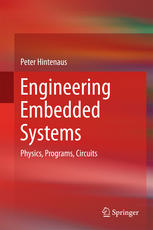

Most ebook files are in PDF format, so you can easily read them using various software such as Foxit Reader or directly on the Google Chrome browser.
Some ebook files are released by publishers in other formats such as .awz, .mobi, .epub, .fb2, etc. You may need to install specific software to read these formats on mobile/PC, such as Calibre.
Please read the tutorial at this link: https://ebookbell.com/faq
We offer FREE conversion to the popular formats you request; however, this may take some time. Therefore, right after payment, please email us, and we will try to provide the service as quickly as possible.
For some exceptional file formats or broken links (if any), please refrain from opening any disputes. Instead, email us first, and we will try to assist within a maximum of 6 hours.
EbookBell Team

5.0
38 reviewsThis is a textbook for graduate and final-year-undergraduate computer-science and electrical-engineering students interested in the hardware and software aspects of embedded and cyberphysical systems design. It is comprehensive and self-contained, covering everything from the basics to case-study implementation.
Emphasis is placed on the physical nature of the problem domain and of the devices used. The reader is assumed to be familiar on a theoretical level with mathematical tools like ordinary differential equation and Fourier transforms. In this book these tools will be put to practical use.
Engineering Embedded Systems begins by addressing basic material on signals and systems, before introducing to electronics. Treatment of digital electronics accentuating synchronous circuits and including high-speed effects proceeds to micro-controllers, digital signal processors and programmable logic. Peripheral units and decentralized networks are given due weight. The properties of analog circuits and devices like filters and data converters are covered to the extent desirable by a systems architect. The handling of individual elements concludes with power supplies including regulators and converters.
The final section of the text is composed of four case studies:
• electric-drive control, permanent magnet synchronous motors in particular;
• lock-in amplification with measurement circuits for weight and torque, and moisture;
• design of a simple continuous wave radar that can be operated to measure speed and distance; and
• design of a Fourier transform infrared spectrometer for process applications.
End-of-chapter exercises will assist the student to assimilate the tutorial material and these are supplemented by a downloadable solutions manual for instructors. The “pen-and-paper” problems are further augmented with laboratory activities. In addition to its student market, Engineering Embedded Systems will assist industrial practitioners working in systems architecture and the design of electronic measurement systems to keep up to date with developments in embedded systems through self study.